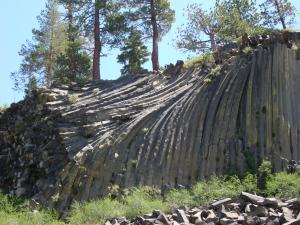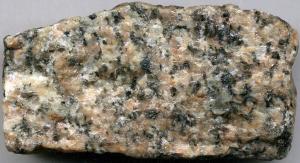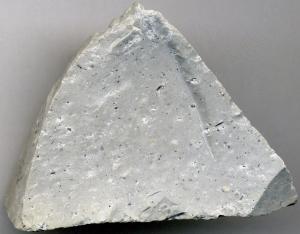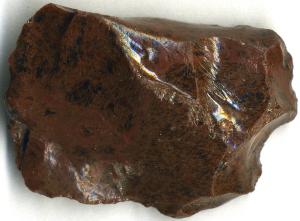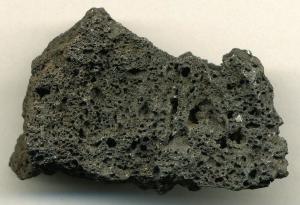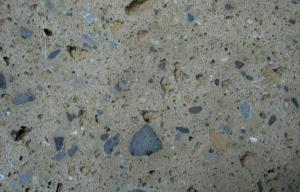Igneous Rock Textures
There are three types of igneous rock compositions: basaltic, granitic, and andesitic. These three types of igneous rocks are dependent upon what type of magma they are made out of.
Basaltic rocks are very dense, heavy, and dark. They take on these characteristics because they are rich in iron and magnesium which are pretty dense minerals. These types of rock generally flow from volcanoes like the shield volcanoes found in Hawaii. Basaltic lava tends to be relatively fluid and flows like thick honey but can also flow as brittle, crumbly blocks of rock.
Granitic types of rock are light in color and have a lower density than basaltic rock. Granitic magma is thick and stiff and does not flow easily. This is because it has a high percentage of silicon and oxygen which are the main ingredients of minerals like silica and quartz. Granitic types of magma create volcanoes that can be very explosive like the eruption at Mt. St. Helens.
Andesitic compositions are somewhere between basaltic and granitic in density, color, and the explosive nature of an eruption.
Igneous rocks are identified by knowing two main features, texture and color. Below is a list of the different types of igneous rock textures.
| Texture Name | Crystal Sizes | Type of Magma | Image |
| Pegmatic | >1cm | very slow cooling, thick, crystals larger than the thickness of pencil lead | |
| Phaneritic | 1-10mm | slow cooling, thick crystals the size of a sharpened pencil lead. | |
| Porphyritic | Large and Small | slow then rapid cooling, caused by changes in magma composition, large crystals embedded in a mass of smaller crystals. | |
| Aphanitic | <1mm | rapid cooling, lava is fluid | |
| Glassy | Not visible | very rapid cooling of magma | |
| Vesicular | Not visible | rapid cooling of gas-charged lava, bubble holes are visible | |
|
Pyroclastic |
Fragments | formed from particles emitted from volcanoes. Contains fragments, ash, tuff |
Below is a quiz you can take to see if you are understanding the different types of igneous rock textures. If you are a teacher, just contact me and let me know you would like access to this Google quiz and I can make you a collaborator or give you a copy of it.
Now that you have had some practice, it is time to see if you use this knowledge in a real situation. With your groups sort your igneous rocks by texture.










